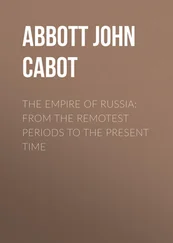In 1404 Timur prepares a campaign for a new worthy goal – the Celestial Empire. He is already beginning to advance, the construction of fortresses and food warehouses, but because of the cold winter he stops. February 1405 is marked by the death of the Great Emir.
Timur wants to become the sole ruler of the Muslim world. And by doing so, he destroys it. Khromets gathers a number of workers, craftsmen and scientists in his beloved Samarkand. However, in the rest of the land, the ruins of great cities scatter under the waves of the winds, and the fields strewn with skulls remain uncultivated.
To our great happiness, the spirit of love and creation – you cannot hit with a saber …
Poetry of Persia:
You are a mine, since you are looking for a ruby
You are loved, since you live in the hope of a date.
Understand the meaning of these words, both simple and wise
Everything that you are looking for – you will certainly find in yourself!
(Omar Khayyam, astronomer and poet, 1048 – 1131)
…In the middle of the fifteenth century, the empire shrinks, but stabilizes. At this time, together with his father, the great scientist, mathematician and astronomer, Timurid Ulugbek, ruled (the exact name is unknown, this is a title). He is overthrown by his own, not so smart son. A year later, he himself loses his head. The next Timurid, Abu-Seid, seeking to suppress the civil strife that had gone out of control, invites nomadic Uzbeks to his crumbling state Maverannahr. Those obey the will of the Timurids for a very short time. In 1501, hired soldiers seize Samarkand and drive out into the unknown the last representative of the great dynasty, Muhammad Babur.
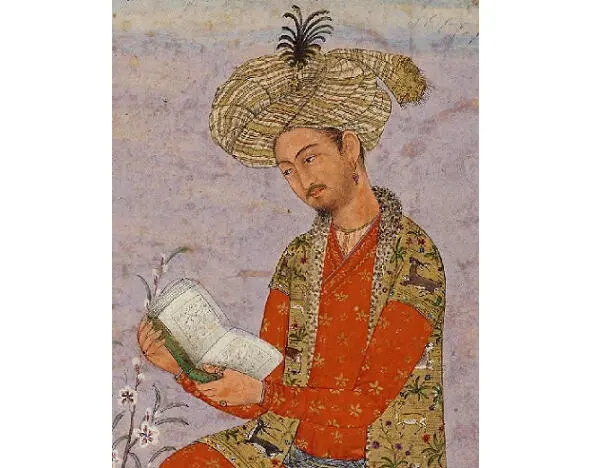
Mohammad Babur, poet and military leader (1483—1530)
Babur has to look for a new homeland for himself and his people. In 1504, he captured Kabul and using it as a huge military base, undertook a campaign in India. Fifteen thousand soldiers with weapons and cannons unusual for that time are enough to crush the army of the Sultan of Delhi, which was twice as numerous. Islam in India has been widespread since the thirteenth century, except for the southern regions, so that the ground has been prepared for a fresh Muslim dynasty that has not been noted in internal conflicts.
Babur is not only a commander, but also a talented poet:
What kind of suffering did you not endure and grievous troubles, Babur?
What betrayals, insults, what slander did not know, Babur?
But whoever reads «Babur-name» will see how much torment
And how much grief the king and poet Babur suffered
Great Mughals, they are Baburids and to some extent Timurids rule India until the middle of the eighteenth century. Padishah Jahan the First tries to recapture the homeland of the ancestors from the powerful Persia, but fails. His more famous deed is the Taj Mahal mausoleum, dedicated to the memory of his wife Mumtaz Mahal.
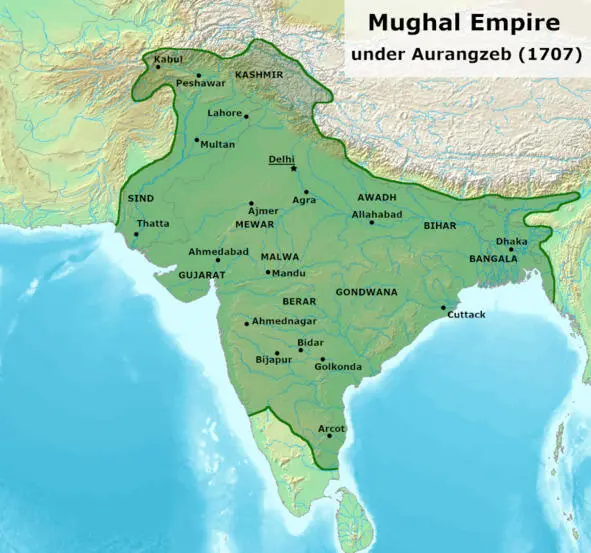
Mughal Empire
Jahan’s son wages even longer and more unsuccessful wars. Adherents of Hinduism revolt. They are defeated, but they turn to guerrilla actions and widespread covert sabotage. Babur’s descendants are degenerating. Court officials deal with their nominal rulers as soon as they sense their slightest attempt to free themselves from obsessive tutelage. The Persians and Afghans burst into India, devastate the regions, take the inhabitants into slavery.
…In September 1852, the British seized Delhi by storm and announced the liquidation of the Mughal Empire.
Since the fifth century AD, most of Russia, except for Pomorie, has been designated on ancient maps as part of the Attila Hun’s empire. The Huns are nomads of the north of China, in search of adventure and prey, rushing to the West. After the battle with the combined Roman and German forces in the Catalaunian fields, their leader Attila slows down. A year later, for unknown reasons, he dies. His sons quarrel with each other and cannot (and do not want to) do anything sensible for their empire. By 530, this imposing state formation as a whole ceases to exist. In Germanic heroic legends, such as the «Song of the Nibelungs», the Hun Attila looks like an enlightened ruler, whose state of affairs practically does not differ from the European one.
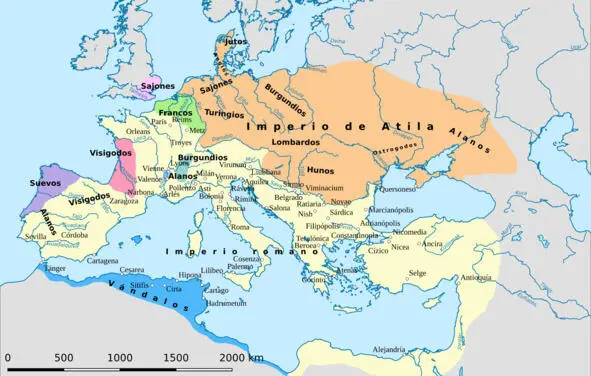
Hunnic Empire (453 AD)
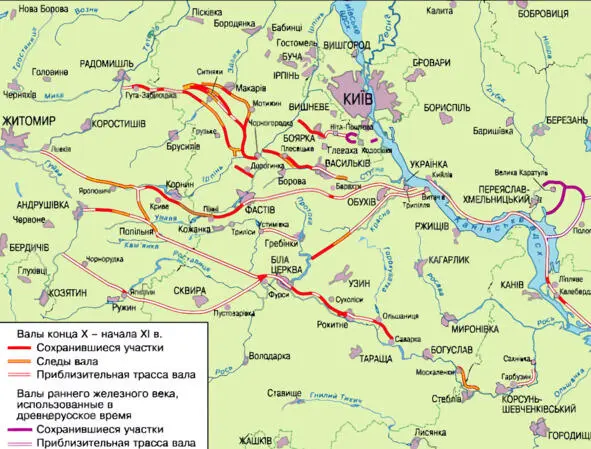
«Serpent’s Shafts». These impressive fortifications are located in echelons, in two or three lines over hundreds of kilometers, to repel the attacks of unknown aggressors from modern Hungary. The shaft closest to Kiev is 40 km away. south of the capital. The time of construction is presumably the second century BC. – seventh century A.D. e. In some areas, the embankment initially reaches a height of 14 m and is complemented by watchtowers.

Serpent’s Shafts today
…The Avar Kaganate, composed of the next mighty Asian wave of migration, spreads from the line from the Crimea to the north to the borders of modern France, capturing part of the Balkans. For some time now, the domination of the Avars finally annoys the head of the Holy Roman Empire Charlemagne. The king organizes an extensive military coalition, including and gaining strength Slavic tribes.
In 805, the kaganate suffers a catastrophic defeat. Obry, red-haired, strong, fierce and proud, as the chronicles testify, disappear throughout the territory of their former residence.
…One more, the Khazar Kaganate has a center in modern Dagestan. He controls fragments of Crimea, the Volga region and Kazakhstan. In 660, this kaganate defeats the troops of neighboring (and partially intersecting with the kaganate) Great Bulgaria. The losing tribes are settled all over the world. Some of them form the well-known Black Sea Bulgaria. Other groups leave for the Volga and Kama, form the Volga Bulgaria, become the ancestors of the Kazan Tatars and Chuvashes. As a rule, they convert to Islam, in the struggle against the kaganate, hoping for the help of their fellow believers from Persia. The third group remains in place and pays tribute to the Khazars.
…In 964 the Russian prince Svyatoslav defeats the Khazar army and places the Belaya Vezha fortress in a strategically important place on the Don (now the bottom of the Tsimlyansk reservoir), captures Tmutarakan, the present Taman peninsula. Finally, the Khazars are finished off by a new wave of nomads, the ubiquitous and indefatigable Polovtsians.
Much later, in the thirteenth century, the Polovtsians will become part of the Golden Horde, assimilate, and pass on their (Kipchak) language to the conquerors. The Khazars are scattered throughout the land, possibly making up a significant part of European Jewish communities. Some of their tribes settled in the Crimea and gave rise to the Karaites.
Since 576, the Türkic Kaganate, a kind of reflection of the Khazar Kaganate, shifted to the East to China, rejects a part of the Crimea and the North Caucasus from Byzantium.
Читать дальше













